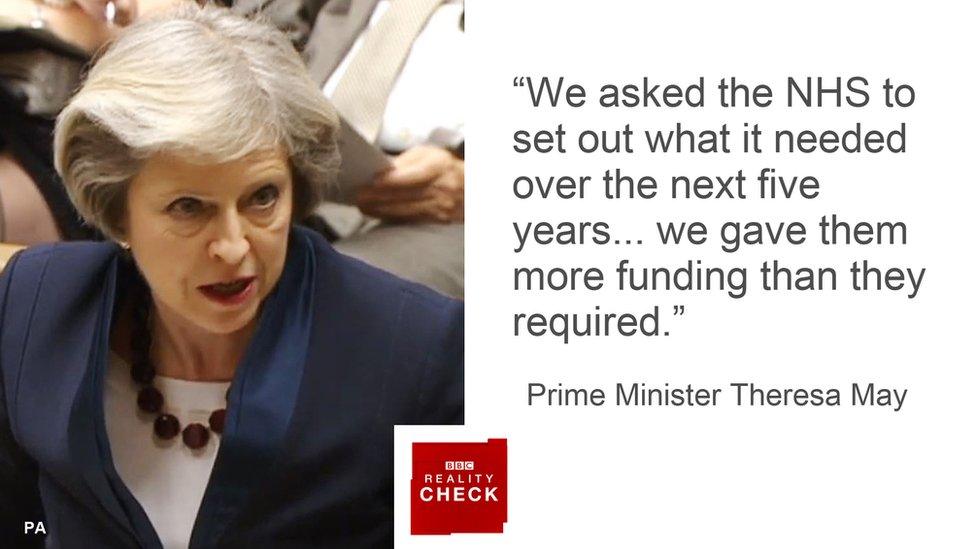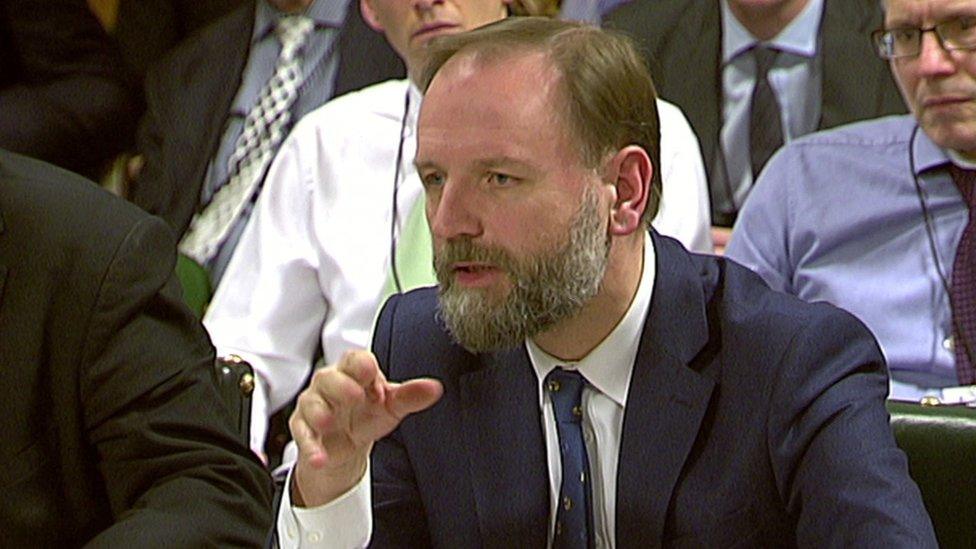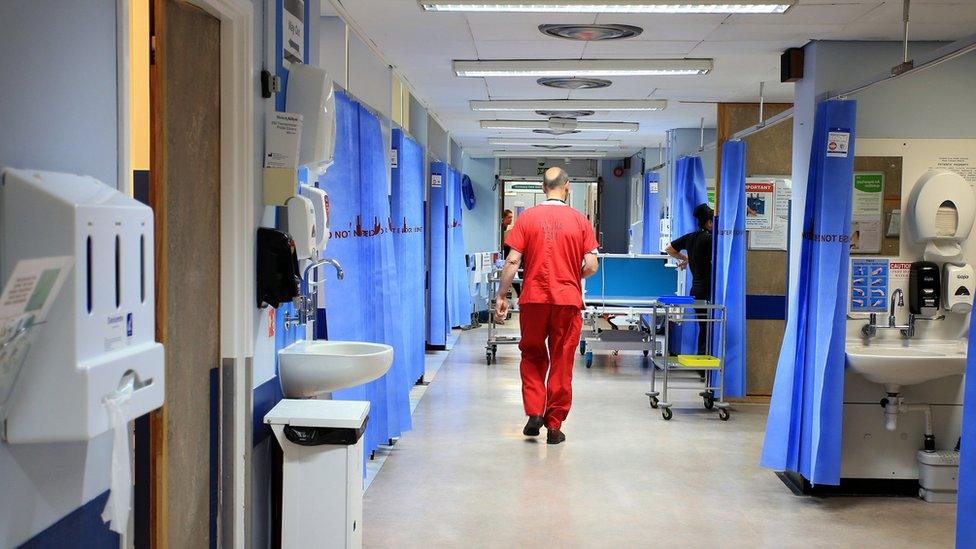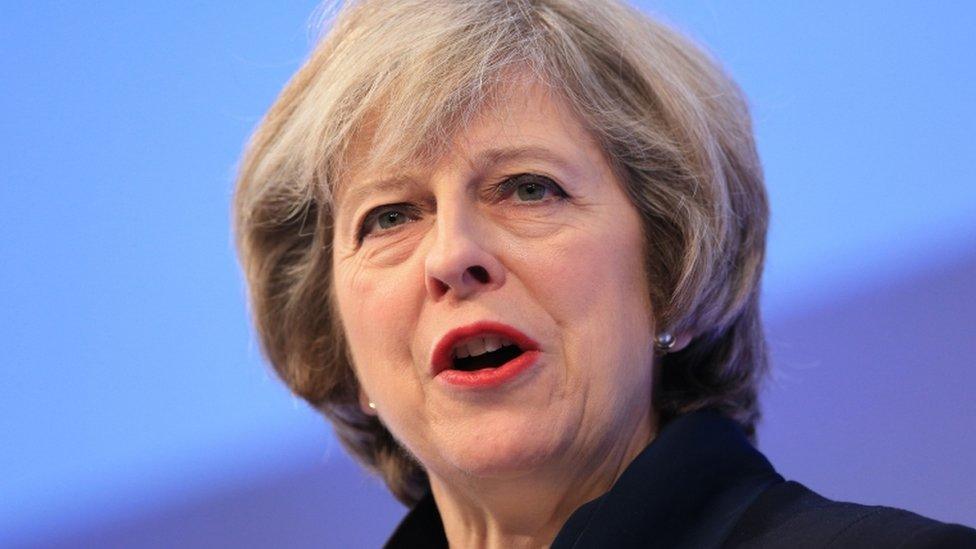Reality Check: Is the NHS getting more than it wanted?
- Published

The claim: The NHS is being given more money than it asked for.
Reality Check verdict: The amount that the NHS in England is being given over this Parliament is at the bottom end of the range that it asked for. It doesn't take into account the knock-on effects of shortfalls in other areas such as social care.
"We asked the NHS to work out what it needed over the next five years in terms of... the funding it would need," Prime Minister Theresa May told Sky News on Sunday.
"We gave them more funding than they required."
But NHS England chief executive Simon Stevens denied this on Wednesday.
We are only talking about the NHS in England because health is a devolved power, although increased spending on the NHS in England is reflected in the overall amount of funding allocated to devolved governments.
The government says it has given the NHS in England an extra £10bn over the life of this Parliament, a more generous offer than the £8bn Mr Stevens requested in 2014.
The £10bn is NHS England's extra budget for the period 2014-15 to 2020-21, so it covers six years, not five - it is actually £8.4bn over the five-year Parliament.
And as Mr Stevens pointed out, the document in which he set out how much cash the health service needed was called the Five Year Forward View, not the six-year forward view.
But still, £8bn was what the NHS asked for, so shouldn't that be enough?
Mr Stevens has made clear that when he mentioned the £8bn figure, that was the minimum amount needed just to plug the funding gap.
But this figure is not enough to keep pace with rising demand, improve services or accommodate plans for seven-day services.
Speaking to NHS leaders last June, he said: "Let's not rewrite history.
"In the Forward View, we actually said that the National Health Service would need between £8bn and £21bn by 2020 in order to sustain and improve."
Rising demand
So government has given the NHS funding within the range of what it asked for, but it is at the very bottom of this range.
And we know demand is rising.
Between 2004-05 and 2015-16, attendances at accident and emergency departments went up by almost 30%, while over a similar period, the number of people aged 85 and over increased by 31%.
NHS trusts also finished the last financial year (2015-16) £2.4bn in the red, so some of the extra money is being used just to plug gaps.
On top of this, the government used a different calculation compared with previous years when it came up with the £8.4bn figure, arguably making it look more generous.
In the past when it talked about this funding, figures referred to the whole health budget and now they are referring to only NHS England.
This does not include things such as training, building upkeep or public health, including smoking cessation and some sexual health and obesity management services, which now fall on general local authority budgets.
All of these areas may face cuts that could pass on extra costs to the NHS, meaning the £8.4bn will not go as far.
Not the whole story
Also falling to local councils rather than the NHS is the funding of social care.
When there is not enough social care available, this piles pressure on to hospitals.
For example, elderly people who cannot access the right care in the community are more likely to end up in A&E after falling or becoming dehydrated, for example.
Overstretched care services are also part of the reason people end up staying in hospital beds longer than they need to.
Figures published on Thursday showed there were almost 200,000 lost bed days in November 2016 because of delays in discharging people into the community.
So looking at the NHS budget in isolation does not tell the whole story.
The NHS might have more money, but if it has to be spent on keeping people in hospital because social care is unavailable, then it is not going towards treating more people or improving care.
The House of Commons Health Committee have worked out that it is a £4.5bn increase once you factor in the whole health budget in the way that it used to be calculated.



- Published11 January 2017

- Published21 December 2016
- Published8 January 2017

- Published8 January 2017

- Published20 October 2016